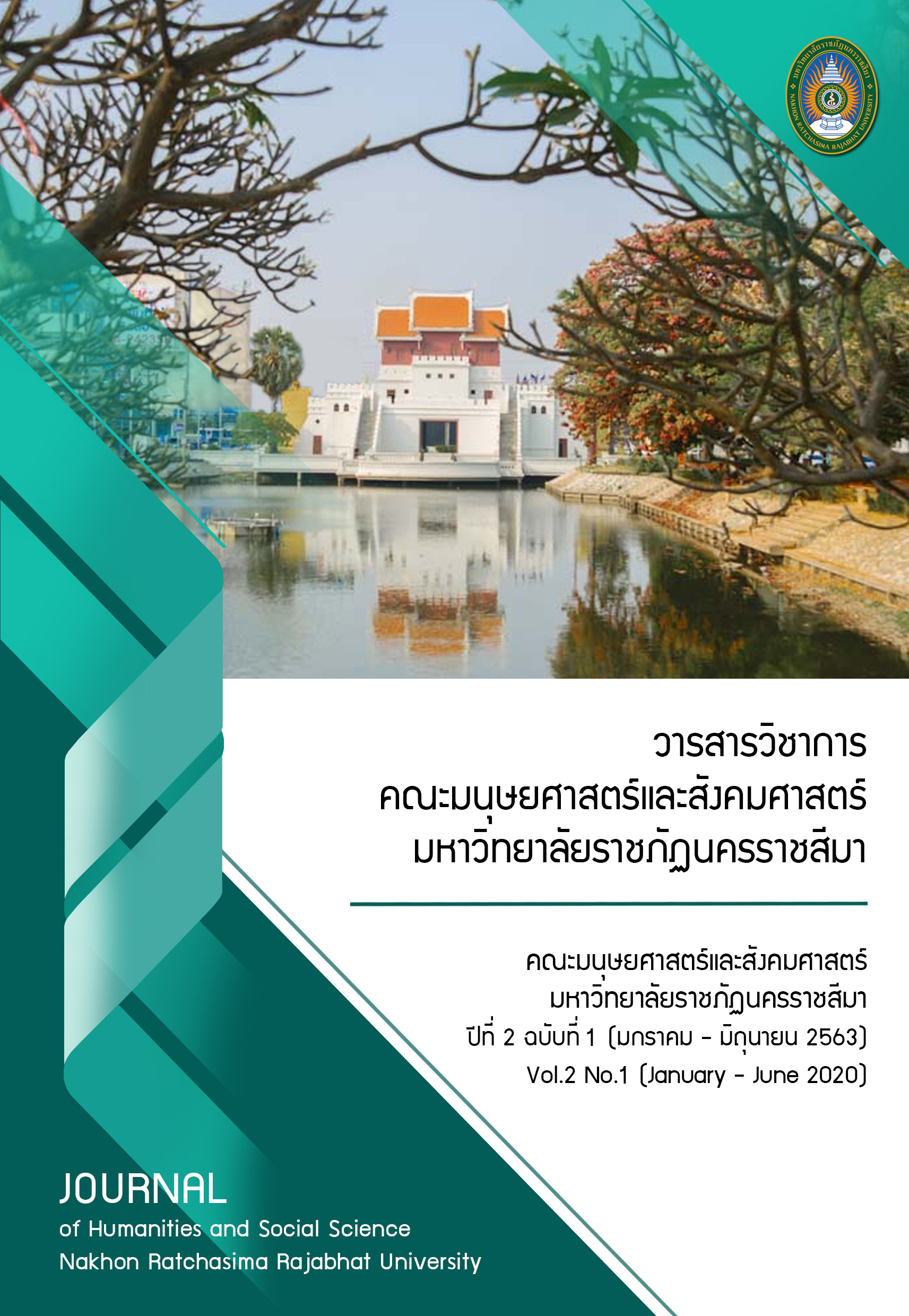THE USE OF FACEBOOK CLOSED GROUPSTO IMPROVE LEARNING ACHIEVEMENT IN THE ENGLISH PHONETICS COURSE
Keywords:
Face book, learning achievement, English phoneticsAbstract
The objectives of this study were to: 1) evaluate the learning achievement of the course English Phonetics after the out-of-class learning activities using Facebook and 2) measure the attitudes of the students after using the learning activities. The sample subjects were first year English majors of ThepsatriRajabhat University (n=52). The instruments were three lesson plans (15 hours), an attitude measurement test, a pronunciation test. The quantitative data were analysed using descriptive statistics, namely, mean, standard deviation and one sample t-test and the qualitative data analysis were based on content analysis.
The findings suggested that 1) the learning achievement of the subjects improved after the out-of-class learning activities using Face book, with the post-test mean score of37.46 out of 50(74.92%). Comparing to the criterion of 70%, it was found that the post-test mean score was higher than the criterion at the significance level of .05, and 2) the attitude measurement indicated that the topic obtaining the top three mean scores were: aiding the self-practice as often as desired based on the individual’s learning ability (M=4.65, S.D.=0.56), convenient as a means to disseminate information simultaneously(M=4.63, S.D.=0.53), and convenient for self-learning anytime and anywhere(M=4.56, S.D.=0.64).
References
กุลชัยกุลตวนิช, ชุติวัฒน สุวัตถิพงศ, นวลลออ ทวิชศรี, เกษมสันต สกุลรัตน. (2554). เฟสบุค: การจัดการเรียนการ
สอนผสมผสานตามแนวคิดโซเชียลคอนสตรัคติวิสต (Social Constructivism). สืบคน21 ธันวาคม 2560,
จาก http://www.niteschan.com/nec2011/2_Day%201/E1/E1_11_91.pdf
ระวิ แกวสุกใส และชัยรัตน จุสปาโล. (2556). เครือขายสังคมออนไลน: กรณีเฟสบุค (Facebook) กับการพัฒนา
ผูเรียน. วารสารมหาวิทยาลัยนราธิวาสราชนครินทร, 5(4),195-205.
วัชรพงษ หวันสมาน. (2558). ผลของการใชเฟซบุกเปนสื่อกลางในการสอนอานภาษาอังกฤษเฉพาะทางใหกับ
ผูเรียนที่มีความสามารถทางภาษาในระดับพื้นฐาน. วิทยานิพนธศิลปศาสตรมหาบัณฑิต มหาวิทยาลัย
สงขลานครินทร. สงขลา.
วรรณพร กลิ่นบัว. (2553). การสรางเครือขายทางสังคมผาน www.facebook.com ของกลุมวัยทํางาน.
วิทยานิพนธปริญญานิเทศศาสตรมหาบัณฑิตมหาวิทยาลัยธุรกิจบัณฑิตย. กรุงเทพฯ.
สายวรุณ สุกก่ํา, เอกสิริ แกนศักดิ์ศิริ และ อุทุมพร โดมทอง. (2563). สหสัมพันธภายในชั้น. สืบคน 15 เมษายน
, จาก http://sc2.kku.ac.th/stat/statweb/images/Eventpic/60/Seminar/02_5_Intraclass-
Correlation.pdf
แอนณา อิ่มจําลอง และวิไลวรรณ จงวิไลเกษม. (2556). การใชเฟซบุคเปนชองทางการสื่อสารการเรียนการสอน
ทางดานนิเทศศาสตร. วารสารนิเทศศาสตรธุรกิจบัณฑิตย, 7(1), 75-93.
AbManan, N.A., Ashaari Alias, A., & Pandian, A. (2012). Utilizing a social networking website as
anESL pedagogical tool in a blended learning environment: An exploratory study.
International Journal of Social Sciences, 2(1), 2-9.
AlSaleem, B.I. (2018). The effect of Face book activities on enhancing oral communication skills
for EFL learners. International Education Studies, 11(5), 144-153.
Al-Tamimi, M.F., Al-Khawaldeh, A.H., Al Natsheh, H.I.M., &Harazneh, A.A. (2018). The effect of using
Face book on improving English language writing skills and vocabulary enrichment among
University of Jordan sophomore students. Journal of Social Sciences, 7(3), 187-214.
Baran, B. (2010). Facebook as a formal instructional environment. British Journal of Educational
Technology, 41(6), 146-149.
Blattner, G., & Fiori, M. (2009). Face book in the language classroom: Promises and possibilities.
Instructional Technology and Distance Learning (ITDL), 6(1), 17–28.
Blattner, G., &Lomicka, L. (2012). Facebook-ing and the social generation: A new era of language
learning. Alsic, (Apprentissage des langues et systèmesd’information et de
communication), 15(1). Retrieved December 20, 2017, from http://alsic.revues.org/2413
Bowman, N.D., &Akcaoglu, M. (2014). “I see smart people!”: Using Facebook to supplement
cognitive and affective learning in the university mass lecture. Internet and Higher
Education, 23, 1-8.
Boyd, D.M., & Ellison, N.B. (2007). Social network sites: Definition, history and scholarship. Journal
of Computer-Mediated Communication, 13(1), 210-230.
Charlton, P., Magoulas, G., &Laurillard, D. (2012). Enabling creative learning design through
semantic technologies. Technology, Pedagogy and Education, 21(2), 231-253.


